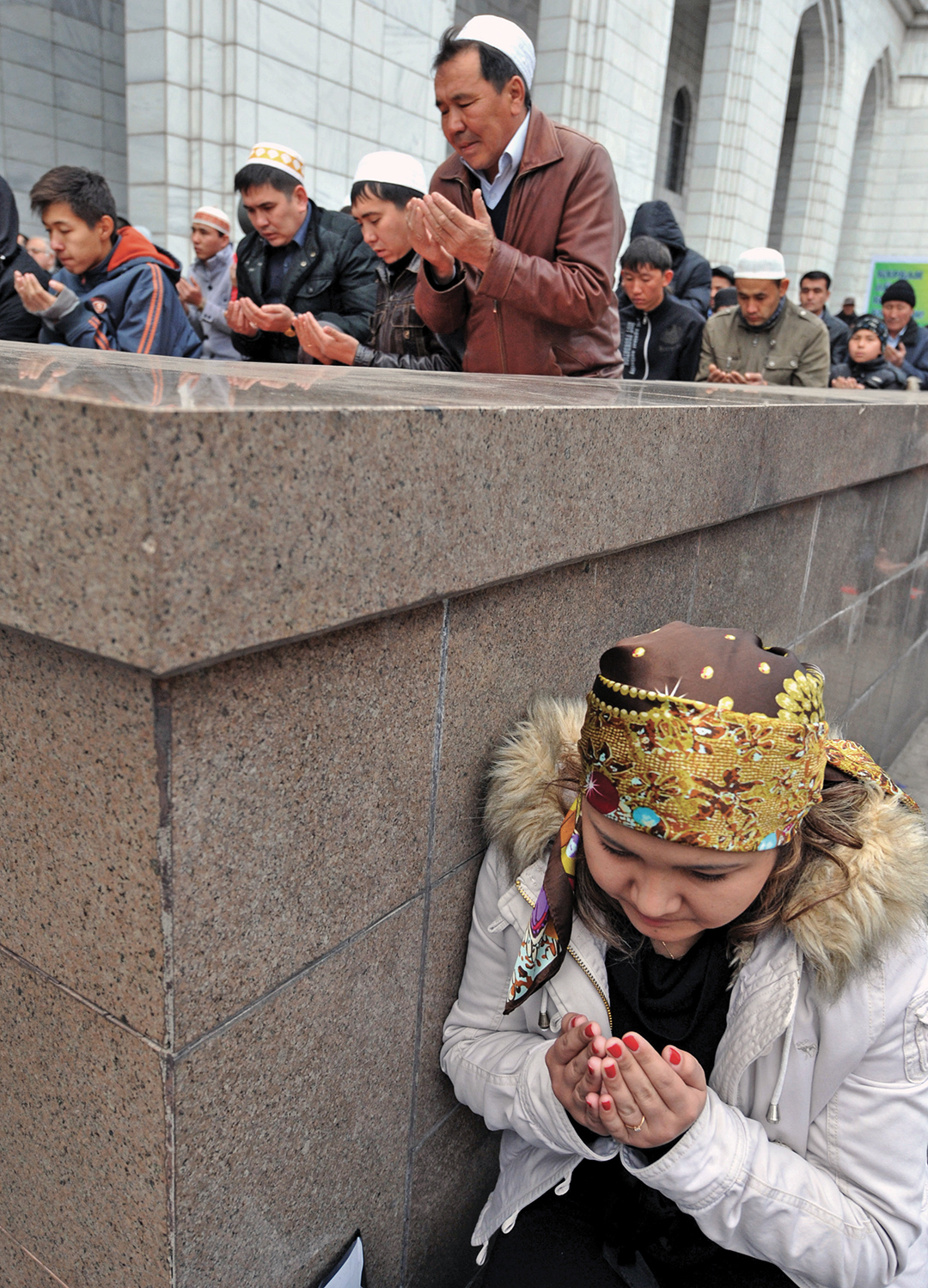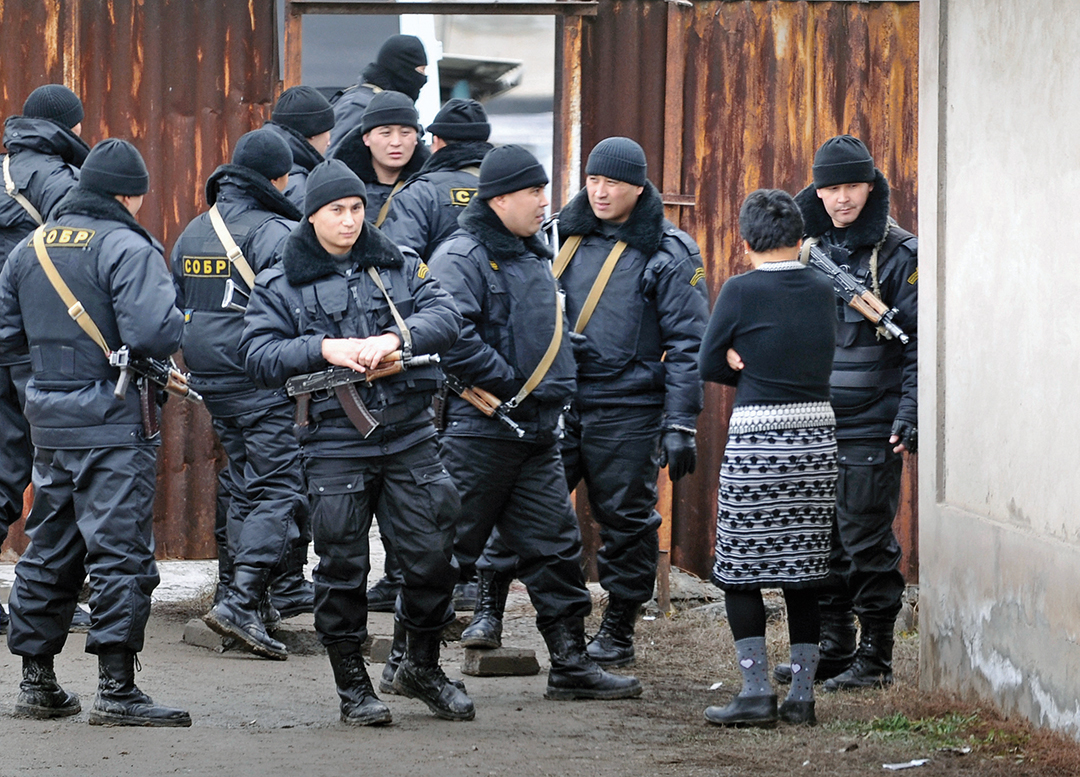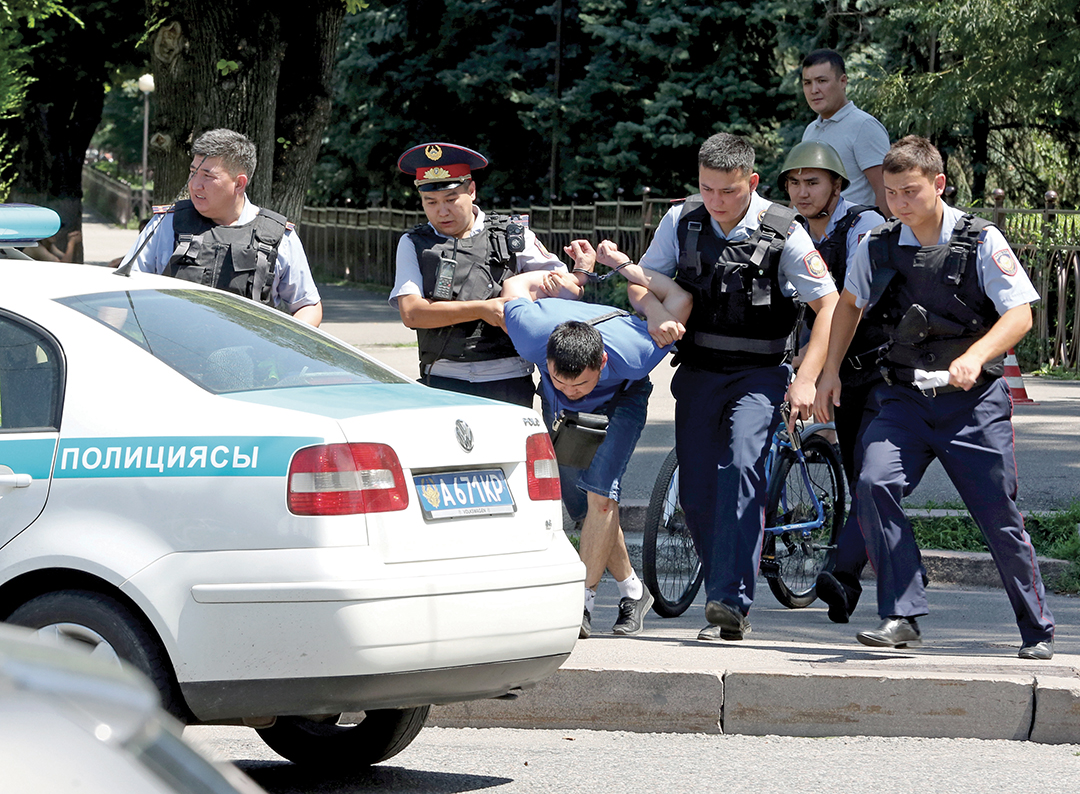TheCountry Employs a Multidisciplinary Approach
By Dr. Irina Chernykh
Chief research fellow, Kazakhstan Institute for Strategic Studies
The set of narratives and structure of the discourse in Kazakhstan are shaped by two factors:
Kazakhstan’s place in the current system of international relations: Kazakhstan is on the periphery of international relations and is a small state pursuing a multivector policy.
Kazakhstan is a weak state: It lacks a unified discourse space. Rather than follow the center-periphery model, power structures in Central Asian countries are built around a multiplicity of centers that compete with each other to maintain and protect their dominance. Each social group that acts as one of the many power centers, be it an ethnic, religious or pressure group, strives to increase its own security.
Kazakhstan’s peripheral position and relatively recent statehood ensure that narratives produced by world and regional powers are superimposed over the local narratives. As a result, many ideas of key importance in Kazakhstan are actually generated abroad and are simply reproduced in the discourses that take place in the country.
Terrorism in Kazakhstan
Counterterrorism narratives in Kazakhstan are shaped by its image as a stable nation that has not suffered serious acts of terrorism that would resonate regionally or globally. At the national level, only a handful of events have been recognized as acts of terrorism by law enforcement agencies and the judiciary:

AFP/GETTY IMAGES
A number of acts of violence in 2011 (failed bombings in Atyrau on October 31 and the suicide attack in Taraz on November 12 that killed seven).
A series of Soldiers of the Caliphate videos posted online, containing demands for changes to Kazakhstan’s religious activities legislation.
These events were all somehow linked to the Law on Religious Activities and Religious Organizations, approved in 2011 and designed to strengthen state control over religious activities in the country.

There are also “hidden” activities such as financing of terrorism, incitement of terrorism, measures taken by special forces to prevent acts of terrorism, and so on. These activities normally fly under the radar and do not shape counterterrorism narratives.
Acts of terrorism, with links to Kazakhstan, that take place abroad are also addressed in the discussion of foreign terrorist fighters fighting in Syria (primarily as part of the so-called Islamic State). The subject of terrorist fighters from Kazakhstan took the spotlight in 2013 when photo and video footage of 150 Kazakh militants fighting in Syria was posted online. The total number of militants who left Kazakhstan for Syria is estimated at 250-400. Although these numbers cannot be viewed as significant, militants from Kazakhstan are actively used in Islamic State (IS) propaganda:
In videos posted online, militants from Central Asia are almost exclusively from Kazakhstan.
IS highlights the presence of Kazakh women and children to promote the idea that the “state” is composed of multiple generations and capable of imparting its values to future generations.
The fact that a significant number of militants moved from Kazakhstan to the Syrian conflict zone with their families may indicate that they do not intend to return and do not see Kazakhstan as part of their future.
Kazakhstan currently has two main strategies for dealing with extremist violence and terrorism:
Use of violent military action to eliminate the enemy physically.
Preventive measures to make it impossible for terrorist structures to function properly — primarily preventive population outreach measures.
The Kazakh government’s guiding principle is that military action alone, undertaken without additional measures, cannot produce results in the fight against terrorism, and it may lead to even more dangerous outcomes, since it does not eliminate the conditions that produce acts of terrorism. This principle serves as the stepping stone for the country’s transition from the concept of terrorism in its counterterrorism narratives to the more encompassing concept of radicalization.
Radicalization in Kazakhstan
Today, the term “radicalization” is widely used. The concept draws its popularity from its descriptive nature in terms of causes of terrorism and the factors that drive acts of terrorism. Starting in 2004, and especially in 2005, after the Madrid and London attacks respectively, the term “radicalization” took center stage in the analysis of terrorism and counterterrorism policies.

in July 2016. The attack by Islamist militants killed three policemen and one civilian. EPA
In Kazakhstan, the term radicalization came into relatively systematic use in 2011, when the country was shaken by a series of violent acts, most of which were interpreted as terrorism by the public and experts. For example, on July 4, 2011, the television channel Stan.tv showed a video titled Kazakhstan: the threat of Islamic radicalization and dedicated to the attack on police forces in Aktobe. On November 22, 2012, First Deputy Prosecutor General Iogan Merkel highlighted religious radicalization in Kazakhstan during the International Conference on Counter-Terrorism. By the mid-2010s, the term radicalization had secured its place in the political, academic and journalistic vocabulary.
Today, we can distinguish between two groups of factors behind radicalization in Kazakhstan: internal and external. Internal factors may include:
Issues of identity and the desire to protect it.
Alienation and marginalization (primarily among youth).
Social inequality and desperation due to lack of prospects.
Low quality of life among specific social classes.
Discrimination and degradation combined with moral outrage and a desire for revenge.
Low literacy levels (primarily religious literacy).
Corruption.
Dissatisfaction with the political situation.
External radicalization factors in Kazakhstan play out on two levels:
Global — Related to the politics and rhetoric of the global superpowers, as well as proliferation of ideologies promoted by global extremist groups such as al-Qaida and IS.
Regional — Related to the situation in neighboring countries and the ability of radical ideologies to cross the borders into Kazakhstan. Additionally:
The Afghanistan factor: Although the two countries do not share a border, it is believed that radical ideas could be exported from Afghanistan to Kazakhstan.
Instability in the neighboring nations of Tajikistan and the Kyrgyz Republic.
The main factor that drives radicalization at the international level is ideological pressure applied by external groups involved in the conflict.
Counterterrorism narratives
Counterterrorism narratives in Kazakhstan are constructed on the foundation of pertinent legislation that regulates the country’s counterterrorist activities. The laws in this sphere are quite exhaustive and require only a small amount of tweaking. There is also the State Programme on Combating Religious Extremism and Terrorism for 2013-2017, which establishes a set of measures designed to reduce conditions that promote religious extremism and terrorism, and provides a platform for ongoing improvements in the functioning of state agencies.
Institutions that shape counterterrorism narratives in Kazakhstan can be divided into two groups:
Secular (Assembly of the People of Kazakhstan, Agency for Religious Affairs, Anti-Terror Center under the National Security Committee, nongovernmental organizations, Centers for the Study of Religion, secondary and higher education institutions, mass media).
Religious (Spiritual Administration of Muslims of Kazakhstan, local imams).
Members of other religious structures such as the Kazakhstan Metropolitan District of the Russian Orthodox Church, are not invited to participate in shaping counterterrorism narratives, since it is generally assumed in Kazakhstan that extremism and terrorism are the exclusive purview of Islam.
Assembly of the People
of Kazakhstan (APK)
As an advisory body under the president, the APK is among the key structures that shape and promote ideas of spiritual unity, foster and strengthen ties of friendship between nations, ethnicities and confessions, and uphold social stability. In fact, counterterrorism narratives are formed as part of the Concept of Strengthening and Developing Kazakhstani Identity and Unity (2015), which can be boiled down to the following examples:
Kazakhstani identity and unity are built on the foundation of our shared values based on cultural, ethnic, linguistic and religious diversity.
Kazakhstani identity and unity is a continuous intergenerational process based on the fact that each citizen, regardless of ethnicity, has linked his or her destiny and future with Kazakhstan. Our society is united by a shared past, a shared present and a shared responsibility for the future. We share one nation and one Motherland: an independent Kazakhstan.
Committee for Religious Affairs
The Committee for Religious Affairs under the Ministry of Culture and Sport designs and implements state policies devised to protect freedom of religion and work with religious organizations, develops proposals for improving relevant legislation, conducts appropriate educational outreach measures, analyzes the religious situation in the country and maintains expertise on religious literature.
Educational outreach groups focused on protecting freedom of religion and preventing radicalization provide channels for disseminating counterterrorism narratives, along with cultural and educational online resource e-islam.kz and a telephone hotline for issues related to religion. Religious experts also monitor internet resources for extremist content and block offending websites. The committee reports that more than 7,000 websites were analyzed in 2015, and 177 extremist resources were discovered and referred to court.
Examples of counterterrorism narratives produced by the Committee for Religious Affairs can be found in statements from Chairman Galym Shoikin:
“From the very beginning, our country found the only correct answer: secularism, which allows members of different ethnicities and confessions to live in peace and accord.”
“All religious associations have equal rights and equal responsibilities, and regardless of their faith, are equally accountable for unlawful actions as prescribed by law.”
Spiritual Administration
of Muslims of Kazakhstan (SAMK)
Traditional Islam is represented by the SAMK. With its roots in the Soviet period, SAMK currently serves as a national Islamic religious association with branches in every region of the country. The following measures provide channels for disseminating counterterrorism narratives:
Development of the country’s own system of theological education (with 10 madrassas and one university).
An attestation and further professional training system for the country’s imams, which includes clarification of the country’s religion legislation and specific steps to prevent dissemination of extremist ideologies (1,400 imams went through this training in 2015).
National and regional educational outreach groups that work with the country’s religious population.
Publication of religious educational materials (41 titles in 2015) and websites (www.muftyat.kz, www.muslim.kz).
Examples of counterterrorism narratives can be found in the statements of the Supreme Mufti of Kazakhstan Erzhan Kazy Malgazhyuly:
“We cannot say religion is separate from the state, because the state is made up of society, and society is inconceivable without religion. … Religion is separate from politics. That’s what we must clarify. Religion must not be involved in politics. It must not be used as a means to achieve political goals.”
“Our ancestors … had only one goal: to preserve the nation.”
Nongovernmental organizations
Several NGOs focused on preventing and counteracting violent extremism and terrorism operate in Kazakhstan. These organizations work with various focus groups:
Convicts serving prison terms for participation in religious extremism and terrorism (Akniet).
Religious Muslims (at the jamaat, mosque and family level; Shapagat, Ansar, Nurly, Bilim).
Youth (Citizens’ Alliance, Association of Centres for the Study of Religion).
Victims of violence, women (Center for Victims of Destructive Religious Movements).
Examples of counterterrorism narratives can be found in the statements of the Director of the Association of Centres for Victims of Destructive Religious Movements, Yulia Denisenko:
“We cannot file each woman in a hijab and each man with a beard under the label ‘potential terrorist.’ It’s not what’s on your head but what’s in your head that’s important.”
“People don’t come to the jihad: They escape into it.”
Secondary and higher
education institutions
These are the central institutions in the effort to prevent radicalization and violent extremism, as well as to promote counterterrorism narratives. To use this tool effectively, the country is undergoing a shift in the concept of religious education, designed to improve the population’s religious literacy. For example, Introduction to Religious Studies, a required secondary school class, has been transformed into Introduction to Secularism and Religious Studies.
Seminars for secondary and higher education students designed to prevent radicalization are held regularly, along with religious education outreach, formation of an academic knowledge base, and inoculation against destructive ideologies presented as religion and critical thinking skills. Today, the most pressing challenge in this sphere is a shortage of qualified experts in the field of religion. To address this problem, the government has allocated funds for the training of religious studies experts (in 2014-2015, 82 grants were offered for professional education in religious studies, 150 grants for Islamic studies, and 15 for theology).
Mass media and social media
The professional journalism community has developed a code of ethics for media reporting on acts of terrorism and extremism. The general principles outlined in the code are: to support victims of terrorism, the state and law enforcement in fighting terrorism, and to unequivocally denounce the actions of terrorists. The Bloggers’ Alliance of Kazakhstan tracks cases of dissemination of extremist and terrorist ideologies on social media, and the results are referred to court to block these destructive internet resources. In addition, a three-part documentary about the situation in Syria was produced based on interviews with former militants from Kazakhstan who fought in the Syrian conflict zone and were convicted for their unlawful actions. The documentary was broadcast several times on TV in Kazakhstan and, judging by feedback from viewers and experts, had a serious emotional impact on the country’s population.
Conclusions
Counterterrorism narratives produced in Kazakhstan are primarily designed to change the behavior of radicalized individuals, rather than their mentality. These narratives are more cost-effective and are aimed at alienating radicalized individuals and encouraging them only to imitate “normal” behavior. On the other hand, no measures can solve the problem of radicalization once and for all. Radicalization, as well as deradicalization, is a process unique to each individual, with different factors influencing each specific case. Therefore, proactive measures designed to change the attitudes and convictions of people in particularly vulnerable and high-risk groups, and consequently prevent radicalization, are more effective in the long run. Some of the areas particularly crucial for a proactive approach to preventing radicalization are:
Regular analysis of the current situation and continuous monitoring of the level of radicalization in the country, as well as work with particularly vulnerable, high-risk groups.
Measures designed to assimilate particularly vulnerable high-risk groups into the larger society.
More active involvement of women’s organizations in the campaign to prevent radicalization and promote deradicalization.


Comments are closed.